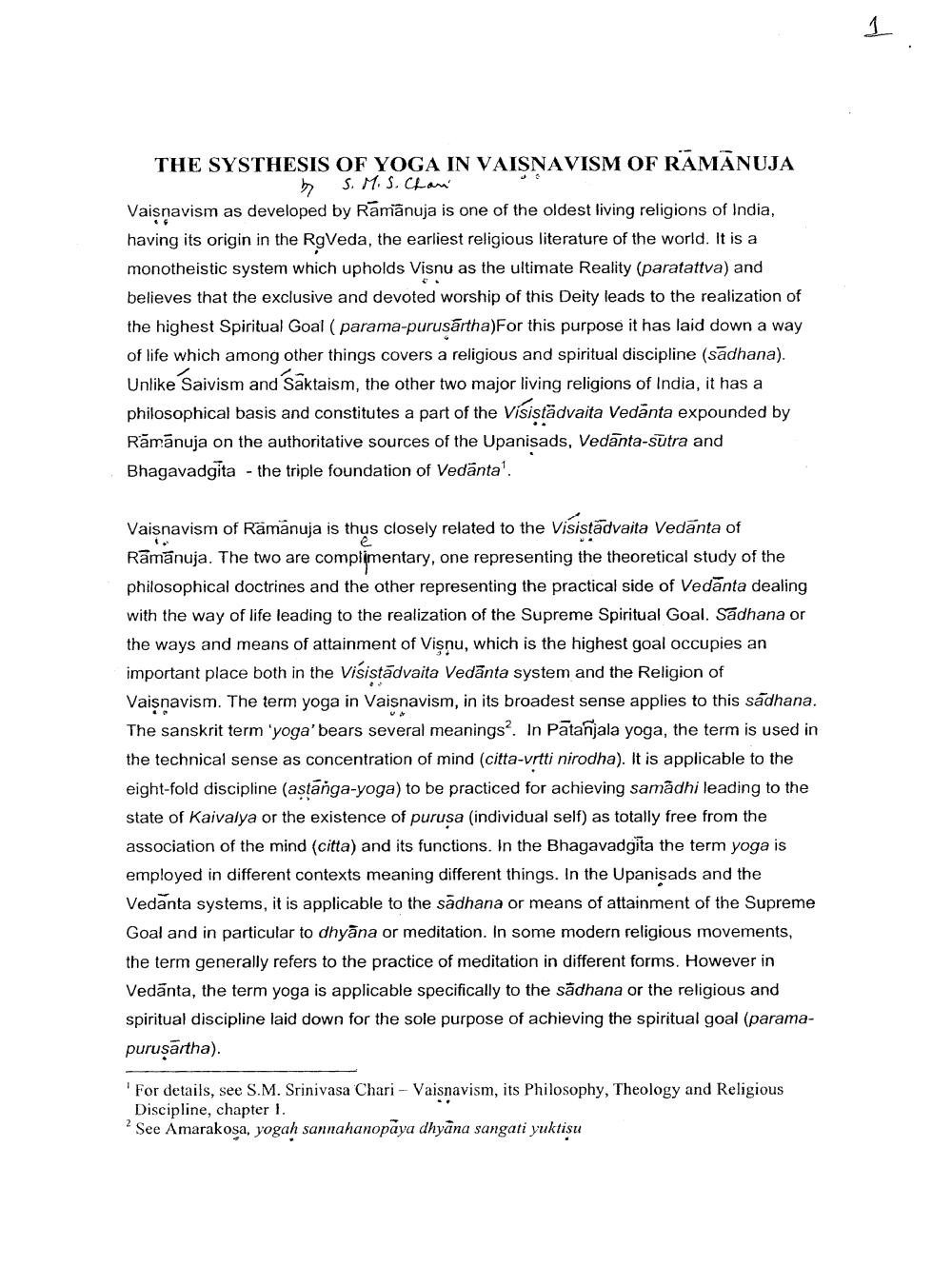Book Title: Synthesis of Yoga in Vaisnavism of Ramanuja Author(s): Publisher: View full book textPage 1
________________ THE SYSTHESIS OF YOGA IN VAISNAVISM OF RAMANUJA b S. M. S. Chani Vaisnavism as developed by Ramanuja is one of the oldest living religions of India, having its origin in the RgVeda, the earliest religious literature of the world. It is a monotheistic system which upholds Visnu as the ultimate Reality (paratattva) and believes that the exclusive and devoted worship of this Deity leads to the realization of the highest Spiritual Goal ( parama-purusartha)For this purpose it has laid down a way of life which among other things covers a religious and spiritual discipline (sadhana). Unlike Saivism and Saktaism, the other two major living religions of India, it has a philosophical basis and constitutes a part of the Visistadvaita Vedanta expounded by Ramanuja on the authoritative sources of the Upanisads, Vedanta-sutra and Bhagavadgita - the triple foundation of Vedanta'. Vaisnavism of Ramanuja is thus closely related to the visistadvaita Vedanta of Ramanuja. The two are complimentary, one representing the theoretical study of the philosophical doctrines and the other representing the practical side of Vedanta dealing with the way of life leading to the realization of the Supreme Spiritual Goal. Sadhana or the ways and means of attainment of Visnu, which is the highest goal occupies an important place both in the Visistadvaita Vedanta system and the Religion of Vaisnavism. The term yoga in Vaisnavism, in its broadest sense applies to this sadhana. The sanskrit term 'yoga' bears several meanings? In Patanjala yoga, the term is used in the technical sense as concentration of mind (citta-vrtti nirodha). It is applicable to the eight-fold discipline (astanga-yoga) to be practiced for achieving samadhi leading to the state of Kaivalya or the existence of purusa (individual self) as totally free from the association of the mind (citta) and its functions. In the Bhagavadgita the term yoga is employed in different contexts meaning different things. In the Upanisads and the Vedanta systems, it is applicable to the sadhana or means of attainment of the Supreme Goal and in particular to dhyana or meditation. In some modern religious movements, the term generally refers to the practice of meditation in different forms. However in Vedanta, the term yoga is applicable specifically to the sadhana or the religious and spiritual discipline laid down for the sole purpose of achieving the spiritual goal (paramapurusartha). For details, see S.M. Srinivasa Chari - Vaisnavism, its Philosophy, Theology and Religious Discipline, chapter 1. ? See Amarakosa, yogah sannahanopaya dhyana sangati yuktisuPage Navigation
1 2 3 4 5 6 7 8 9 10 11 12 ... 23
